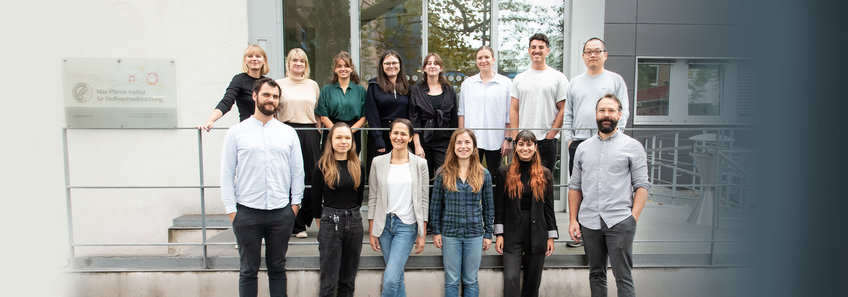
Synaptic Transmission in Energy Homeostasis
Research Group Fenselau
Synapses are the main conduit of information flow in the brain. In our research, we investigate how transmission across these essential connections enables communication within circuits for the control of systemic metabolism. For this, we employ various state-of-the-art neuroscience techniques in combination with mouse genetic approaches, which provide a direct means to causally relate synaptic transmission in defined circuits with specific metabolic processes.
An organism’s ability to tightly coordinate energy balance and glucose metabolism is critical for metabolic health and survival. Such coordination is achieved by multiple distinct neural cell populations that sense energy-related signals and relay this information to downstream brain sites to orchestrate diverse processes such as feeding behaviour, energy expenditure and glucose homeostasis. To achieve this, it is essential that communication within these circuits is efficient and highly precise as well as appropriately adapted to energy and nutrient availability.
The Fenselau group focuses on advancing our current understanding of synapse physiology and plasticity – such as synaptic long-term potentiation – in defined circuits that regulate key determinants of systemic metabolism. The overarching goal of our research is to establish a causal link between link synaptic transmission in these circuits and biological processes at the cellular, tissue and organismal levels.
Specifically, we are addressing the following three research areas:
- Deciphering the synaptic organization of neural gut-to-brain communication
- Defining the functional significance of synaptic plasticity in feeding circuits
- Unravelling the regulatory role of neuropeptides in metabolic pathways
To this end, we use a wide range of diverse, but complementary methodologies, including brain slice electrophysiology, recombinase-expressing mice, AAV viral approaches, optogenetics, chemogenetics, single-cell sequencing as well as in vivo imaging techniques. The powerful combination of these approaches allows us to study (1) how synaptic transmission within defined circuits causally relates to biological processes, (2) how synaptic communication changes in states of caloric deprivation or overnutrition and (3) how synaptic alterations relate to pathological conditions such as obesity or type 2 diabetes mellitus.
Selected publications
Advanced neurobiological tools to interrogate metabolism.
Mirabella PN and Fenselau H. (2023) Nat Rev Endocrinol. accepted.
A synaptic amplifier of hunger for regaining body weight in the hypothalamus.
Grzelka K, Wilhelms H, Dodt S, Dreisow ML, Madara JC, Walker SJ, Wu C, Wang D,Lowell BB, Fenselau H. (2023) Cell Metab. 2023 May 2;35(5):770-785.e5.
Gut-brain communication by distinct sensory neurons differently controls feeding and glucose metabolism.
Borgmann B, Ciglieri E, Biglari N, Brandt C, Cremer AL, Backes H, Tittgemeyer M, Wunderlich FT, Brüning JC, Fenselau H (2021) Cell Metab. 2021 Jul 6;33(7):1466-1482.e7.
Hypothalamic Pomc Neurons Innervate the Spinal Cord and Modulate the Excitability of Premotor Circuits.
Reinoß P, Ciglieri E, Minére M, Bremser S, Klein A, Löhr H, Fuller PM, Büschges A, Kloppenburg P, Fenselau H#, Hammerschmidt M# (2020) Curr Biol. 2020 Dec 7;30(23):4579-4593.e7. (#joint corresponding authors)
A rapidly acting glutamatergic ARC→PVH satiety circuit postsynaptically regulated by α-MSH.
Fenselau H, Campbell JN, Verstegen AM, Madara JC, Xu J, Shah BP, Resch JM, Yang Z, Mandelblat-Cerf Y, Livneh Y and Lowell BB (2017) Nat Neurosci. 2017 Jan;20(1):42-51.
Highlights | |
|---|---|
| 2020 | Research grant Novo Nordisk: “Targeting neural mechanisms underlying body weight set point regulation” |
| 2019 | ERC starting grant “Gut-Brain Communication in Metabolic Control - GuMeCo”. Project initiation: 04/2020 |
| 2018 | Research grant from the German Research Foundation “Melanocortin-4 receptor-expressing neurons in the nucleus accumbens and regulation of food preference” |
| 2011 | Funding from the Austrian National Bank for postdoctoral research |
| 2011 | PhD fellowship Medical University of Vienna |